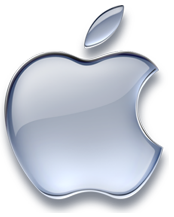Apple reported its financial results for the first quarter during the past week. The results came in significantly better than the same quarter last year and beat analyst expectations. Below I will present some key data from the report and my own reflections.

Results For The Fourth Quarter Compared To The Same Quarter In 2014
- Sales came in at 74.6 billion dollars - an increase of 30% from the previous quarter (57.6).
- Unit sales in millions for the major product categories were as follows:
- iPhone 74.5 (new record)
- iPad 21.4
- Mac 5.5
- Net income increased by 37% hitting the 18 billion dollar mark (9.5). No other company has reported sucha large profit for a single quarter before!
- Earnings per share were 3.06 dollars, an increase of 48% compared to the same quarter last year (2.07). EPS increased so much more than the net profit, because of the massive buybacks Apple executed earlier in the year. The number of shares outstanding have been reduced by 7%.
What Are The Main Reasons For The Strong Results?
- Record sales of the iPhone, which during the first quarter accounted for almost 70% of Apple's income.
- Higher margins - up from 37.9 to 39.9 percent.
- Share Repurchases
What Else Was Positive?
- Appstore deliver record income.
- Apple PAY launched in October already accounts for almost 70% of all mobile payments in the US.
- Sales in China have increased significantly.
- Apple has spent 130 billion on share buybacks and dividends, and still has 178 billion dollars left in treasure chest.
- 30 automakers have pledged support for Carplay during 2015t.
My First Reaction To The Report
It is very encouraging that both sales and profit increases so dramatically for Apple. The company will surpass my prediction of sustainable VPA by a wide margin if it continues at this rate. iPad sales did not quite liv up to expectations though. The lower iPad sales is most likely a result of cannibalization, since the iPhone 6 Plus is approaching iPad Mini's screen size.
As of late Apple is becoming a more shareholder-friendly company, which previously executed split, dividend increase and above all share repurchases testify to. With this in mind It will be interesting to see by how much they will raise the dividend in the next quarterly report.
Apple's strength and weakness is that the company primary is depended on a product category, a dependence that is greater than ever before. At the same time the current depth of the iPhone lineup is strong. Although iPhone is the product category that has grown the most, Apple also has a number of product categories and services that have grown considerably in recent years, albeit at a slower pace. Products and services such as Apple Pay, Carplay, iWatch, App Store, Mac, Apple TV, make me feel confident that Apple will expand its earnings base in the years ahead. Even if we remove the iPhone completely out of the equation, Apple still is a strong company with a solid historical growth.
If I previously had any thoughts of selling they have all but vanished. Apple will have a place in the portfolio for a long time. You can, as usual, find my Watch List and Stock Portfolio in main menu.
Have a good day
Have a good day












